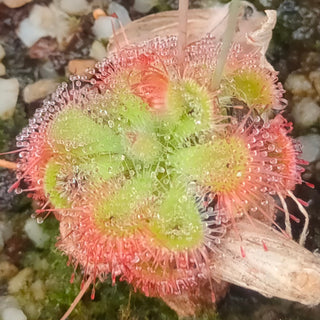Anaphalis margaritacea
PEARLY EVERLASTING, WESTERN
- Unit price
- / per
Anaphalis margaritacea, commonly known as the western pearly everlasting or pearly everlasting, is an Asian and North American species of flowering perennial plant in the sunflower family. It is widespread across most of the United States and Canada, as well as northwestern Mexico. Asian populations are found in China, the Russian Far East, Japan, Korea, northern Indochina, and the Himalayas. The species is reportedly naturalized in Europe though not native there.
Anaphalis margaritacea grows erect up to about 1.2 meters (3 ft 11 in) and has narrow, alternate leaves. One salient feature is that the undersides of the leaves are covered in tiny hairs, giving them a woolly feel and appearance. The stems are dry and brittle. The small whitish to yellowish flower grows in a corymb inflorescence. The inflorescence's most conspicuous part is the numerous white bracts that surround the disc florets; these are pearly in color, even when dried, the reason for the species' common name.
The plant is dioecious, meaning the pollen-producing (male) and seed-producing (female) flowers are borne on separate plants. It prefers dry, sunny climates, although it is hardy to temperatures well below freezing.
The leaves are host to the caterpillars of the American painted lady butterfly (Vanessa virginiensis) and the painted lady butterfly (Vanessa cardui).
Type: Hardy perennial
Hardiness zones: 3-8
Location: Sun to part shade
Height: 90cm, 36"
Note: Anaphalis seeds are very tiny
Surface sow. Do not bury the seeds. Keep continuously moist. Temperature 20-22 C, 68-72 F. Seeds germinate in 10-30 days.
Anaphalis margaritacea
PEARLY EVERLASTING, WESTERN
- Unit price
- / per
Multiple secure payment options available.
Adding product to your cart
You may also like
Anaphalis margaritacea, commonly known as the western pearly everlasting or pearly everlasting, is an Asian and North American species of flowering perennial plant in the sunflower family. It is widespread across most of the United States and Canada, as well as northwestern Mexico. Asian populations are found in China, the Russian Far East, Japan, Korea, northern Indochina, and the Himalayas. The species is reportedly naturalized in Europe though not native there.
Anaphalis margaritacea grows erect up to about 1.2 meters (3 ft 11 in) and has narrow, alternate leaves. One salient feature is that the undersides of the leaves are covered in tiny hairs, giving them a woolly feel and appearance. The stems are dry and brittle. The small whitish to yellowish flower grows in a corymb inflorescence. The inflorescence's most conspicuous part is the numerous white bracts that surround the disc florets; these are pearly in color, even when dried, the reason for the species' common name.
The plant is dioecious, meaning the pollen-producing (male) and seed-producing (female) flowers are borne on separate plants. It prefers dry, sunny climates, although it is hardy to temperatures well below freezing.
The leaves are host to the caterpillars of the American painted lady butterfly (Vanessa virginiensis) and the painted lady butterfly (Vanessa cardui).
Type: Hardy perennial
Hardiness zones: 3-8
Location: Sun to part shade
Height: 90cm, 36"
Note: Anaphalis seeds are very tiny
Surface sow. Do not bury the seeds. Keep continuously moist. Temperature 20-22 C, 68-72 F. Seeds germinate in 10-30 days.

















































